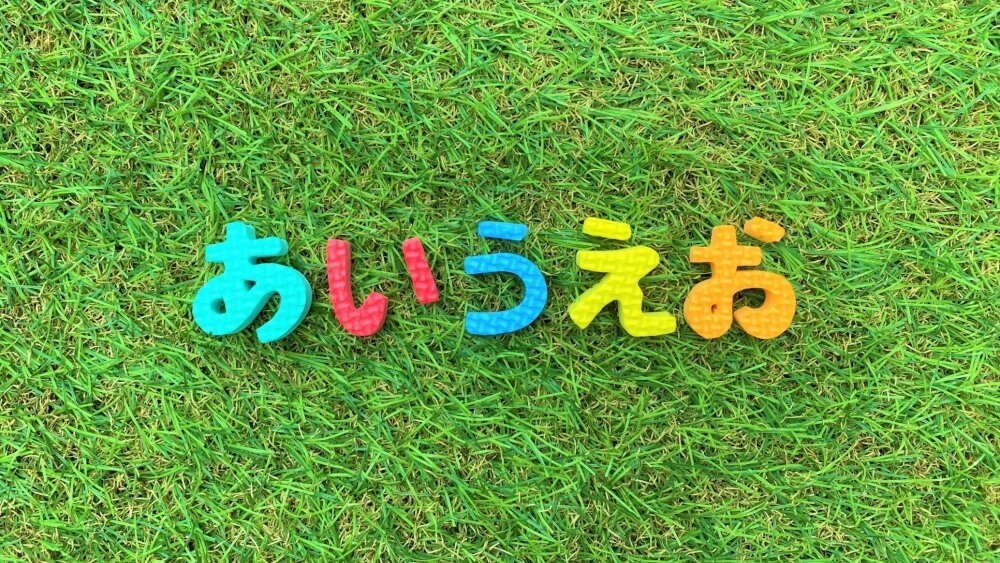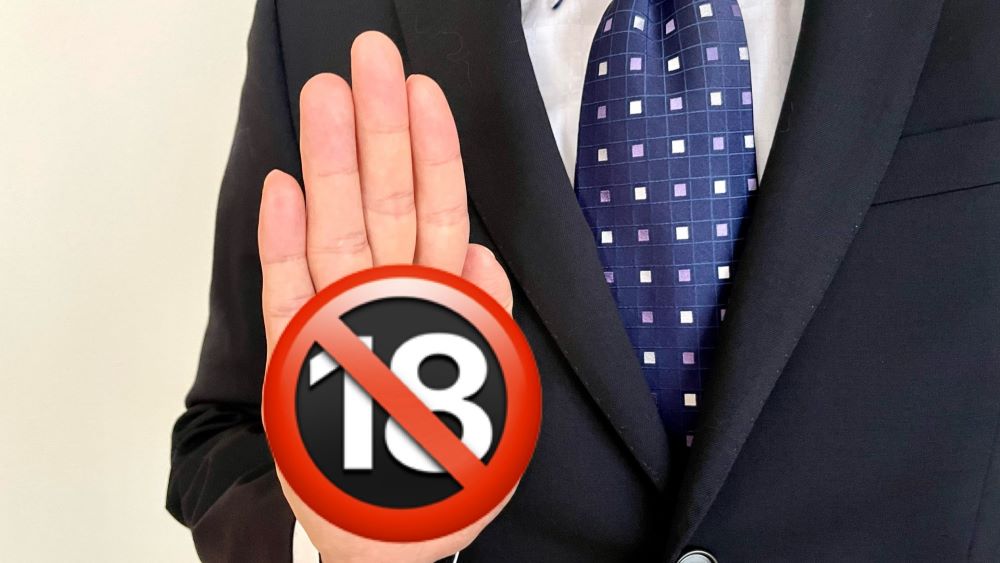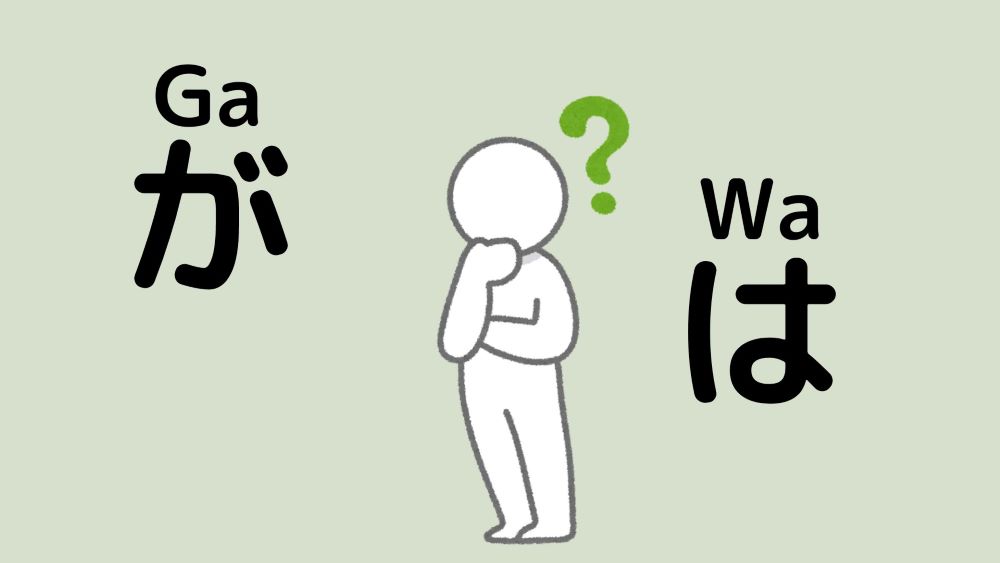Learning the correct pronunciation is a crucial first step when starting your journey with the language. This guide provides a chart of Hiragana and Katakana characters along with native speaker audio to help you master the correct Japanese pronunciation.
Japanese Phonetics and Characters
Japanese as a Syllabic Language
Japanese is a syllabic language, meaning that most Hiragana and Katakana characters represent entire syllables that typically include both a consonant and a vowel. Think of a syllable as a “beat” in a word. For example, the word “Tokyo” has two syllables: “To” and “kyo.”
In Japanese, each character corresponds to one of these “beats.” Instead of combining different letters for each sound (like the “T” and “o” in “To”), a single character represents the entire sound, making pronunciation simpler compared to English, where syllables can be more complex.
Types and Roles of Japanese Characters
Japanese uses three types of characters: Hiragana, Katakana, and Kanji.
- Hiragana: These are simple, curved characters used for Japanese words and grammatical functions. For example, the word “ここ” (here) is written in Hiragana.
- Katakana: These more angular characters are mainly used for foreign words, names, and onomatopoeia (words that mimic sounds). For example, the English word “Cake” is written as “ケーキ” in Katakana.
- Kanji: These are complex characters borrowed from Chinese and arranged in a Japanese way, often representing entire meanings on their own. For example, “山” means “mountain.”
Hiragana / Katakana Pronunciation With Audio
Basic Hiragana and Katakana
Below is a chart covering all Hiragana and Katakana characters. Each entry includes the Hiragana character, its Katakana equivalent, an audio of the correct pronunciation, and a simple word using that syllable.
Vowels
あ
ア
[a]
あめ (rain)
い
イ
[i]
いぬ (dog)
う
ウ
[u]
うみ (sea)
え
エ
[e]
えき (station)
お
オ
[o]
おと (sound)
K sounds + vowels
か
カ
[ka]
かさ (umbrella)
き
キ
[ki]
き (tree)
く
ク
[ku]
くるま (car)
け
ケ
[ke]
けむり (smoke)
こ
コ
[ko]
こえ (voice)
S sounds + vowels
さ
サ
[sa]
さけ (alcohol)
し
シ
[shi]
しお (salt)
す
ス
[su]
すし (sushi)
せ
セ
[se]
せん (line)
そ
ソ
[so]
そら (sky)
T sounds + vowels
た
タ
[ta]
たまご (egg)
ち
チ
[chi]
ちず (map)
つ
ツ
[tsu]
つき (moon)
て
テ
[te]
て (hand)
と
ト
[to]
とり (bird)
N sounds + vowels
な
ナ
[na]
なまえ (name)
に
ニ
[ni]
にわ (garden)
ぬ
ヌ
[nu]
ぬの (cloth)
ね
ネ
[ne]
ねこ (cat)
の
ノ
[no]
のり (seaweed)
H sounds + vowels
は
ハ
[ha]
はな (flower)
ひ
ヒ
[hi]
ひと (person)
ふ
フ
[fu]
ふね (boat)
へ
ヘ
[he]
へや (room)
ほ
ホ
[ho]
ほし (star)
M sounds + vowels
ま
マ
[ma]
まち (town)
み
ミ
[mi]
みみ (ear)
む
ム
[mu]
むし (insect)
め
メ
[me]
め (eye)
も
モ
[mo]
もり (forest)
Y sounds + vowels
や
ヤ
[ya]
やま (mountain)
ゆ
ユ
[yu]
ゆき (snow)
よ
ヨ
[yo]
よる (night)
R sounds + vowels
ら
ラ
[ra]
らくだ (camel)
り
リ
[ri]
りんご (apple)
る
ル
[ru]
るす (absence)
れ
レ
[re]
れいぞうこ(fridge)
ろ
ロ
[ro]
ろうか (corridor)
W sounds + vowels
わ
ワ
[wa]
わた (cotton)
を
ヲ
[wo]
–
Special sound
ん
ン
[n]
–
Pronunciation Tips
- R Sounds: The Japanese “R” sound is unique. Some people pronounce it closer to an “L,” others closer to an “R,” while many find a middle ground.
- H/F Variations: The sounds “は, ひ, へ, ほ” are pronounced with an “H” sound, while “ふ” is closer to an “F” sound. For instance, “Tofu” is written as “とうふ” and pronounced “toufu,” not “touhu. ”
- “は” Pronounced as “wa”: When ‘は’ is used as a topic marker in a sentence, it is pronounced ‘wa’ instead of ‘ha.” For instance, “わたしは” (watashi wa), “は” is read as “wa.”
- The Particle “を”: The Particle ‘を’ is typically written as ‘wo’ in pronunciation guides, but in actual speech, it is pronounced like ‘o.’ This can sometimes confuse learners. For example, “I eat bread” is written “パンをたべる,” and pronounced “Pan o taberu.”
- “ん” Sound: The character “ん” represents a nasal sound that varies slightly depending on the following sound. It can be pronounced like an “m,” “n,” or even “ng” depending on the word. For example, in “さんま” (sanma), it sounds like “n,” but in “ほん” (hon), it has a softer “ng” sound.
Dakuon and Semi-dakuon (Voiced sounds)
In Japanese, voiced sounds (濁音, dakuon) and semi-voiced sounds (半濁音, handakuon) are created by adding small marks to characters. For example, Dakuten (゛) turns “か” (ka) into “が” (ga), while handakuten (゜) turns “は” (ha) into “ぱ” (pa), altering the basic pronunciation.
G sounds + vowels
が
ガ
[ga]
ガス (gas)
ぎ
ギ
[gi]
ぎんこう (bank)
ぐ
グ
[gu]
グラス (glass)
げ
ゲ
[ge]
ゲーム (game)
ご
ゴ
[go]
ごみ (rubbish)
Z sounds + vowels
ざ
ザ
[za]
ざっし (magazine)
じ
ジ
[ji]
じかん (time)
ず
ズ
[zu]
ズボン(trousers)
ぜ
ゼ
[ze]
ぜんぶ (all)
ぞ
ゾ
[zo]
ぞう (elephant)
D sounds + vowels
だ
ダ
[da]
ダンス (dance)
ぢ
ヂ
[ji]
*rarely used
づ
ヅ
[zu]
*rarely used
で
デ
[de]
でんわ (telephone)
ど
ド
[do]
ドア (door)
B sounds + vowels
ば
バ
[ba]
ばしょ (place)
び
ビ
[bi]
ビン (bottle)
ぶ
ブ
[bu]
ぶた (pig)
べ
ベ
[be]
べんきょう (study)
ぼ
ボ
[bo]
ぼうし (hat)
P sounds + vowels
ぱ
パ
[pa]
パン (bread)
ぴ
ピ
[pi]
ピザ (pizza)
ぷ
プ
[pu]
プール (pool)
ぺ
ペ
[pe]
ペン (pen)
ぽ
ポ
[po]
ポスト (post)
Pronunciation Tips
- V Sounds: Since the original Japanese language lacks the “V” sound, it’s often replaced with “B.” For example, “Volley ball” is written as “バレーボール” and pronounced “bareebooru.”
- “ぢ” and “づ” : The characters “ぢ” and “づ” are now rarely used in modern Japanese, with “じ” and ‘ず’ more commonly used instead.
- P Sounds: They are mainly used for foreign words like “パン” (bread) or “ペン” (pen) and are rarely found in Japanese words.
Yōon (Contracted Sounds)
Yōon refers to contracted sounds like “きゃ (kya)” and “しゃ (sha),” where a consonant combines with a small “ゃ”, “ゅ”, “ょ” to create a mixed syllable. Yōon does not have forms for the “i” (イ) and “e” (エ) vowel rows.
KY sounds + vowels
きゃ
キャ
[kya]
きゃく (customer)
きゅ
キュ
[kyu]
きゅう (nine)
きょ
キョ
[kyo]
きょう (today)
SH sounds + vowels
しゃ
シャ
[sha]
しゃしん (photo)
しゅ
シュ
[shu]
しゅみ(hobby)
しょ
ショ
[sho]
しょう (prize)
CH sounds + vowels
ちゃ
チャ
[cha]
ちゃいろ (brown)
ちゅ
チュ
[chu]
ちゅうい (attention)
ちょ
チョ
[cho]
ちょきん (savings)
NY sounds + vowels
にゃ
ニャ
[nya]
にゃー (meow)
にゅ
ニュ
[nyu]
にゅういん (hospitalisation)
にょ
ニョ
[nyo]
にょう (urine)
HY sounds + vowels
ひゃ
ヒャ
[hya]
ひゃく (hundred)
ひゅ
ヒュ
[hyu]
–
ひょ
ヒョ
[hyo]
ひょう (chart)
MY sounds + vowels
みゃ
ミャ
[mya]
みゃく (pulse)
みゅ
ミュ
[myu]
ミュージック (music)
みょ
ミョ
[myo]
みょうじ (surname)
RY sounds + vowels
りゃ
リャ
[rya]
りゃくご (abbreviation)
りゅ
リュ
[ryu]
りゅう (dragon)
りょ
リョ
[ryo]
りょこう (travel)
GY sounds + vowels
ぎゃ
ギャ
[gya]
ギャグ(joke)
ぎゅ
ギュ
[gyu]
ぎゅうにゅう (milk)
ぎょ
ギョ
[gyo]
ぎょう (row)
J sounds + vowels
じゃ
ジャ
[ja]
じゃがいも (potato)
じゅ
ジュ
[ju]
じゅんび (preparation)
じょ
ジョ
[jo]
じょうたい (state)
J sounds + vowels 2
ぢゃ
ヂャ
[ja]
*rarely used
ぢゅ
ヂュ
[ju]
*rarely used
ぢょ
ヂョ
[jo]
*rarely used
BY sounds + vowels
びゃ
ビャ
[bya]
–
びゅ
ビュ
[byu]
–
びょ
ビョ
[byo]
びょういん (hospital)
PY sounds + vowels
ぴゃ
ピャ
[pya]
–
ぴゅ
ピュ
[pyu]
ピュア (pure)
ぴょ
ピョ
[pyo]
–
Pronunciation Tips
- “ぢゃ,” “ぢゅ” and “ぢょ”: They are rarely used in contemporary Japanese, with “じゃ,” “じゅ,” and “じょ” being more common.
Special Japanese Pronunciation
Sokuon (Geminated consonants)
Japanese has a small character called “Sokuon (っ),” which plays a critical role in pronunciation. It indicates a brief pause before the following consonant, adding emphasis.
For example, in “がっこう [gakkou]” , means school, the small “っ” creates a slight pause, making the “k” sound stronger. It’s like hitting a brief brake before releasing the next consonant. Skipping or shortening this pause can change the meaning of a word, confusing listeners.
がっこう (school)
サッカー (football)
Chōon (Long Vowels)
Japanese vowels can be either short or long, and this difference is crucial because it can completely change the meaning of a word. In writing, long vowels are often marked by an additional vowel character or a “ー.”
For example:
- “おじさん (ojisan)” means uncle or a middle-aged man.
- “おじいさん (ojiisan)” means grandfather or an elderly man.
おじいさん
The extra “i” in “おじいさん” lengthens the “ji” sound, changing the meaning from “uncle” to “grandfather.”
Words with two consecutive vowels are also considered long vowels.
Example:
- “いえ (ie)” means house.
- “いいえ (iie)” means no.
いいえ
- “ちず (chizu)” means map.
- “チーズ (chiizu)” means cheese.
Failing to correctly lengthen a vowel can lead to misunderstandings, like saying “bed” when you meant “bad” in English. Small differences, but with completely different meanings.
Knowing basic Japanese pronunciation is a fundamental step in learning. By practising with the provided charts and audio, you can improve your accuracy and confidence in speaking Japanese. With regular practice, you’ll soon find that Japanese sounds become second nature.


